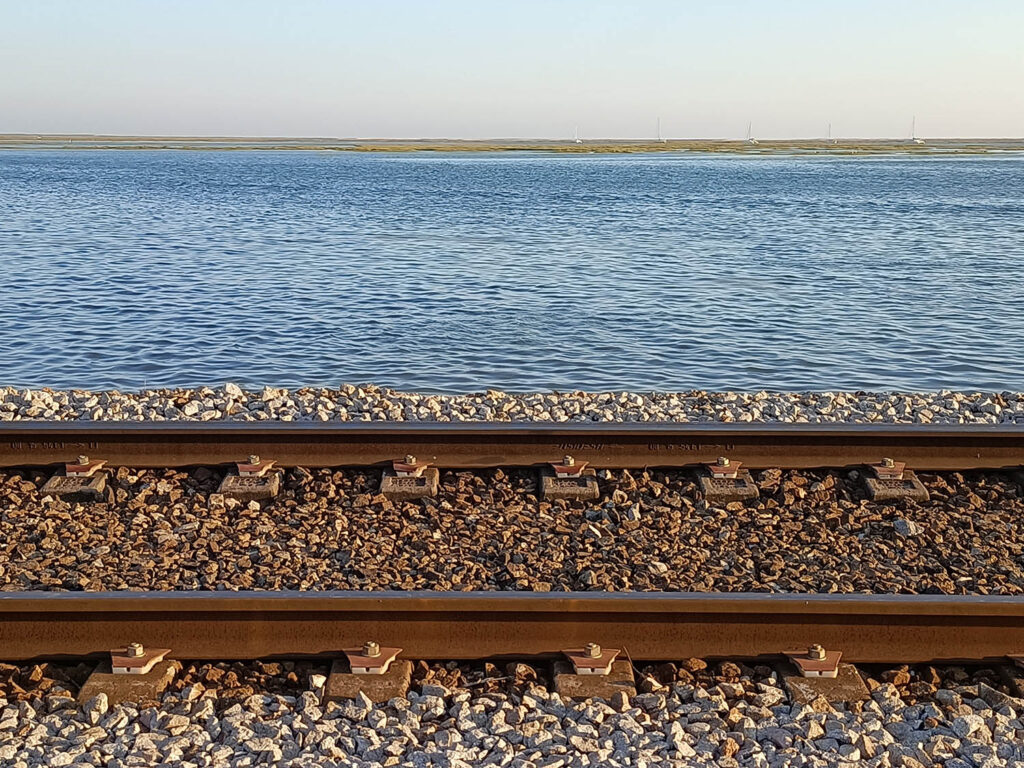The Mais Ferrovia Movement (MMF) considers it «unthinkable» that «in a strategic document for the development and modernization of the railway» such as the National Railway Plan (PFN) «a road mode is defended», in this case, a transitory Metrobus solution for the new coastal light mobility system in the Algarve provided for in the document.
This was one of the repairs that this civic movement made to the plan, in a contribution it made within the scope of the public consultation process of this document, which ended on Tuesday, the 28th of February.
The group of citizens points out that the PFN mentions an evolutionary concept of Light Mobility in the Algarve, "(...) which admits a start of operation in road mode, with a lower initial investment cost, but without excluding its future conversion to a system light rail (…)”.
This possibility, argues Mais Ferrovia, should never fit into a railway plan, «even because it goes against one of the railroad's intentions, which is to constitute an alternative to road transport».
«The MMF deduces that they are referring to a Metrobus or BRT road typology (which, basically, are electric or hybrid buses of greater length), whose operation will require dedicated corridors, using existing road corridors and/or the construction of new corridors», says the movement.
The Metrobus solution will already be applied in an interurban light mobility system that should be born in the municipalities of Olhão, Faro and Loulé, to create a public transport offer with zero emissions, competitive travel times and connections to the Airport and Gambelas.
The preliminary study of this new service, which will be based on a BRT (Bus Rapid Transit) system, was presented on Wednesday, in Olhão, in a session attended by Prime Minister António Costa.
On the sidelines of the session, José Apolinário, president of the Commission for Coordination and Regional Development of the Algarve, which commissioned the study, assured that this line is not the same as that foreseen in the railway plan.
Even so, everything indicates that, at least in a first phase, this is the system that will also be used in this connection that will serve the main locations on the coast of the center and western Algarve.
«The use of BRT in the Algarve will imply either a considerable increase in traffic constraints on existing roads, or considerable damage to the territory and the environment, if one chooses to allocate new spaces to the construction of dedicated highways», defends the movement.
«The MMF considers that the PFN should focus on realizing the great potential of the Algarve Line, with the adoption of continuity solutions that justify the large investments made in its modernization and electrification and that provide the Algarve region with the quality of a railroad of European market, given the new dynamics and patterns of mobility, which are more sustainable and decarbonised», he adds.
This was not the only suggestion given by Mais Ferrovia within the scope of the public consultation, despite this document already being part of the movement's proposals, presented in the document "Strategy for the Algarve Railroad 2050", in the elaboration phase of the Railway Plan, something with which congratulate each other.
The MFM also addresses the issue of two alternatives to reduce travel time between Faro and Lisbon for less than two hours.
The movement defends the execution of the «construction of a new Southern Line, passing through Beja, that truly serves, without constraints, the development of the South of the Country, which includes its connection to the Mediterranean Corridor», to the detriment of the improvement of the Southern Line, in its current route.
On the other hand, «the speed limits/classes associated with the main categories of rail services should be indicated, especially what they refer to as the High Speed (HV) service, so that this PNF is not limited to HV only for the Alfa Pendular service (AP) currently existing. If we are going to invest in rail infrastructure by 2050, we have to aim to reach speeds higher than those of the AP».
«Contrary to what is mentioned in the PFN, the conversion of the Algarve Line into a light rail system will not make direct connections from the entire Sotavento to Lisbon via Intercity Train unfeasible, since the current capacity of the line is not yet exhausted», he considers, still .
«The solution to be adopted could include an intermodal centrality that makes the intersection and modal interface between the AV line connecting Spain (with a route parallel to Via do Infante), the Algarve Line and/or the Algarve Litoral Line, including the connection to the Airport, in the version of the light mobility system that the PFN refers to, serving the Central Algarve, Sotavento and Barlavento Algarvios. This large intermodal station should be strategically located at a central point of intersection for all the aforementioned lines/services, such as, for example, in Parque das Cidades», concludes the MMF.



















Comments